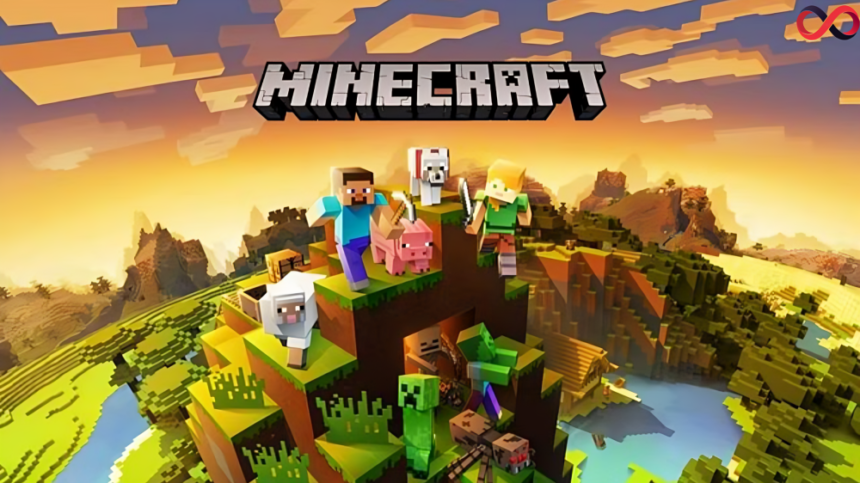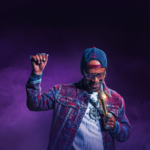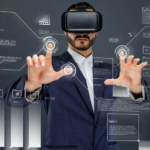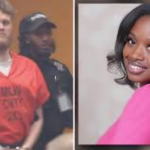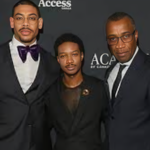Minecraft, launched in 2009 by Markus Persson (Notch), has taken the gaming world by storm. Its simple yet captivating blocky graphics, deep gameplay mechanics, and ever-expanding universe have made it a cornerstone of the gaming industry. One of the key features that contribute to Minecraft’s charm is its use of game icons and banners. These elements not only serve functional purposes but have also become iconic in their own right. In this article, we will explore the history, design, and impact of Minecraft’s game icons and banners, diving deep into their significance in the game’s vast world.
The Evolution of Minecraft Icons
What Are Minecraft Game Icons?
Game icons in Minecraft are small images that represent various items, blocks, tools, and features in the game. These visual representations help players easily identify and interact with their inventory, crafting system, and game world. From basic tools like pickaxes and shovels to complex entities like mobs, Minecraft game icons act as the interface that connects the player with the game world.
Minecraft’s Iconic Art Style
Minecraft’s art style is famously pixelated, creating a charming, nostalgic look that has drawn players in for years. The game icons share this pixel art design, maintaining simplicity while ensuring clarity. The early icons from 2009 were basic, reflecting the limitations of the game’s early development stages. However, over the years, Minecraft’s development team continuously refined and enhanced the icons, resulting in a vast library of items represented in a style that’s instantly recognizable.
The Role of Icons in Gameplay
Minecraft’s game icons aren’t just aesthetic; they serve crucial functions in gameplay. When players gather resources, they see icons representing materials like wood, stone, iron, and diamonds. Similarly, weapons, armor, and enchantments have their own unique icons that help players easily manage their inventory and crafting.
For example, the Minecraft diamond icon is one of the most coveted and iconic images in gaming. It’s synonymous with the concept of achieving great success within the game, driving players to mine deeper and explore more. Other icons, such as the crafting table, furnace, and chests, each hold distinct meaning in the Minecraft world, adding layers to the gameplay experience.
Icon Updates in Minecraft Versions
As Minecraft evolved through its updates, so did its game icons. Notable changes came with the advent of new mechanics such as redstone, potions, and biomes, each of which required the addition of new icons. The transition from the Java Edition to the Bedrock Edition further refined the visuals, leading to clearer, more distinct icons that adapted to different platforms.
Minecraft’s icons are a testament to how simplicity can become iconic. The game’s commitment to refining the design while staying true to its roots has cemented its visual elements as part of pop culture.
Minecraft Banners: Personalizing the Game
What Are Minecraft Banners?
Banners in Minecraft are customizable in-game items that players can design using a variety of patterns and colors. They serve as symbols that players can display in their world to represent their personality, faction, or achievements. These banners can be used to mark territory, create a sense of identity, or simply beautify a player’s in-game environment.
The Mechanics Behind Banners
Banners are crafted using wool and sticks, and they can be customized using dye and patterns. The ability to create custom designs with a wide array of colors allows players to express their creativity, making Minecraft a more personal experience. Players can even add intricate details like gradients, stripes, and shapes to banners using banner patterns.
Minecraft Banner Designs: A Creative Expression
Creating banners in Minecraft is a fun and engaging process, but it’s also a deeply creative one. Players have the opportunity to design flags, shields, and personalized icons that align with their gameplay experience. These banners have become a staple for players involved in multiplayer servers, factions, and communities. They act as emblems for teams, guilds, and even player nations.
The banner patterns are not just simple designs but are symbolic. A skull and crossbones on a banner might represent a pirate-themed server, while a shield emblem could symbolize a kingdom or a faction at war. The options for design are nearly endless, allowing for a level of customization that elevates the sense of ownership players feel within the Minecraft universe.
Banners and the Multiplayer Experience
In Minecraft’s multiplayer modes, banners serve as a central element of team identity and group dynamics. Whether on a PvP (Player vs. Player) server or a role-playing server, the ability to create banners that represent different factions or alliances is a crucial part of the game’s social fabric.
Banners are also used in conquest-based gameplay where factions fight to control specific areas. The banner becomes the symbol of power, and players will often have to defend or attack banner points in various strategic scenarios.
The Significance of Minecraft Icons and Banners in Popular Culture
Minecraft Icons in Merchandise
The distinct visual language of Minecraft icons has extended beyond the game itself into the wider world of merchandise. Icons such as the Minecraft Creeper, pickaxe, and diamond are instantly recognizable to fans. These images appear on a variety of products, from toys to clothing to posters, helping Minecraft reach audiences outside of the gaming community.
The game’s iconic imagery has contributed to its status as one of the most influential video games in modern history, spawning a rich ecosystem of content creators, streamers, and fan art that celebrates the visual elements of Minecraft.
Minecraft Banners in Real-Life Art
The creativity fostered by the game’s banners has inspired real-world artwork and design. People use the Minecraft banner patterns as templates for designing flags, t-shirts, and even tattoos. The ability to design and share these creations with a global audience showcases how deeply Minecraft has permeated culture.
Minecraft Icons as a Digital Asset
As Minecraft continues to be a cornerstone of digital entertainment, the game’s iconic icons and banners have transitioned into digital assets. For instance, in Minecraft marketplace environments, users can purchase or download unique banner designs and icons created by professional designers or the Minecraft community.
FAQs
1. How do I create a custom banner in Minecraft?
To create a custom banner, you need a crafting table, wool, and sticks. After crafting the banner, you can use dyes and patterns to customize the design. You can add various patterns, such as stripes or a skull, using the banner pattern crafting recipes.
2. Can I use Minecraft banners in multiplayer servers?
Yes, banners are widely used in multiplayer servers to represent factions, guilds, or teams. Players often design banners to showcase their identity or to mark important locations within the server.
3. Are Minecraft game icons different across editions?
While the core icons remain similar, some editions of Minecraft, such as Java and Bedrock, may have slight differences in icon design due to platform limitations or interface changes. However, they still maintain the same recognizable style.
4. What is the significance of the Minecraft diamond icon?
The diamond icon represents one of the most valuable resources in Minecraft. Diamonds are sought after for crafting high-end tools and armor, making the diamond icon one of the most significant in the game.
5. Can I use custom banner designs outside of Minecraft?
Yes, many Minecraft players have used their banner designs in real-world art, merchandise, and even as part of custom Minecraft-related content like websites, promotional material, or personal memorabilia.
Conclusion
Minecraft has established itself not just as a game, but as a cultural phenomenon. The game icons and banners that were introduced in 2009 have become deeply ingrained in the game’s identity, enhancing player engagement and creativity. These visual elements have provided a means for players to express their identity, communicate their in-game achievements, and become part of the vast community that surrounds the game.
From their humble beginnings as basic graphics to their evolution into highly recognizable symbols, Minecraft’s game icons and banners remain at the heart of the game’s enduring success. They are symbols of both achievement and personalization, representing the ever-growing world that players continue to build in Minecrafts.

